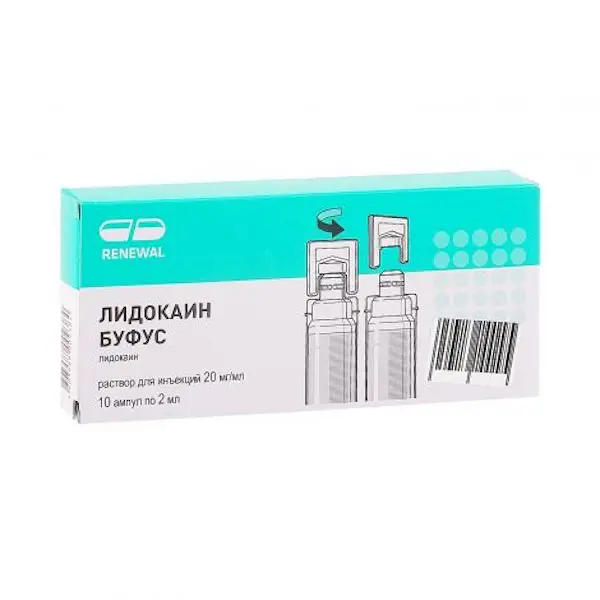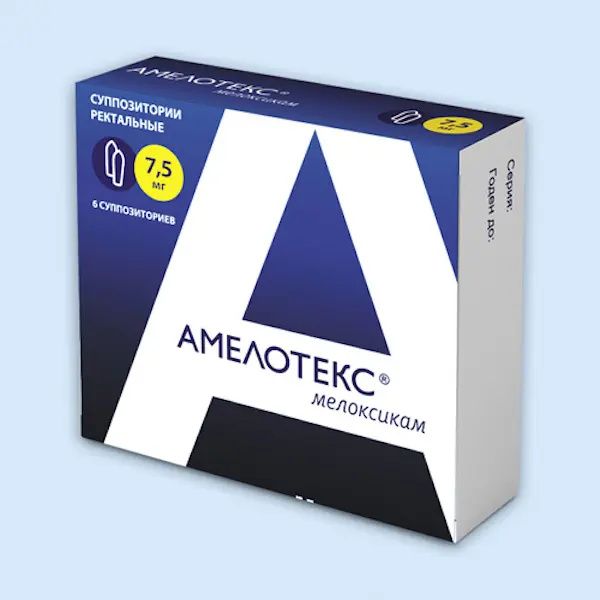Description
Lidocaine Bufus Pharmacodynamics
Lidocaine is a short-acting local anesthetic of the amide type. Its mechanism of action is based on reduction of permeability of neuron membrane for sodium ions. As a result, the rate of depolarization decreases and the excitation threshold increases, leading to reversible local numbness. Lidocaine is used to achieve conductive anesthesia in various parts of the body and to control arrhythmias. It has a rapid onset of action (about one minute after intravenous injection and fifteen minutes after intramuscular injection) and spreads quickly into the surrounding tissues. Its action lasts 10-20 minutes and about 60-90 minutes after intravenous and intramuscular injection, respectively.
Indications
Local and regional anaesthesia, conductive anaesthesia in case of major and minor interventions.
Contraindications
Hypersensitivity to the components of the drug and to anesthetics of amide type; 3rd degree atrioventricular (AV) blockade and hypovolemia.
Caution
Lidocaine should be administered with caution in patients with myasthenia gravis, epilepsy, chronic heart failure, bradycardia and respiratory depression, coagulopagia, complete and incomplete intracardiac conduction block, seizure disorders, Melkersson-Rosenthal syndrome, porphyria, and in the third trimester of pregnancy (see section “Special Indications”).
Dosage and administration regimen
- The dosage regimen should be selected based on the patient’s response and the site of administration. The drug should be administered at the lowest concentration and dose that gives the desired effect. The maximum dose for adults should not exceed 300 mg.
- The volume of the solution to be administered depends on the size of the area to be anesthetized. If there is a need to administer a large volume with low concentration, the standard solution is diluted with saline solution (0.9 % sodium chloride solution). The dilution is carried out immediately before injection.
- Children, elderly and weakened patients are administered in lower doses corresponding to their age and physical condition.
- In adults and children 12-18 years old a single dose of lidocaine should not exceed 5 mg/kg, with a maximum dose of 300 mg.
- Doses recommended for adults:
10 mg/ml 20 mg/ml. - Infiltration anesthesia:
Small interventions 2-10 ml (20-100 mg)
Major interventions 10-20 ml (100-200 mg) 5-10 ml (100-200 mg)
Conduction anesthesia 3-20 ml (30-200 mg) 1.5-10 ml (30-200 mg)
Finger/leg anesthesia 2-4 ml (20-40 mg) 2-4 ml (40-80 mg)
Epidural, lumbar 25-30 ml (250-300 mg)
Caudal, thoracic block 20-30 ml (200-300 mg)
Regional anesthesia Not more than 5 ml (50 mg) Not more than 2.5 ml (50 mg) - Children less than 1 year of age.
- Experience with use in children younger than 1 year of age is limited. Maximal dose in children 1-12 years old is not more than 5 mg/kg of body weight in 1% solution.





